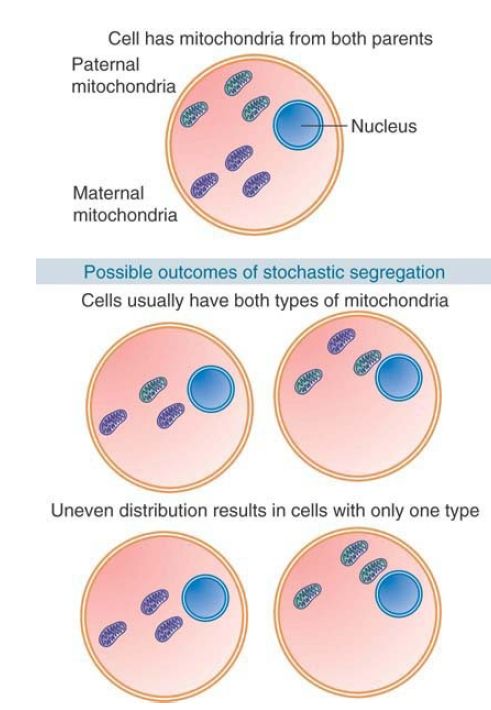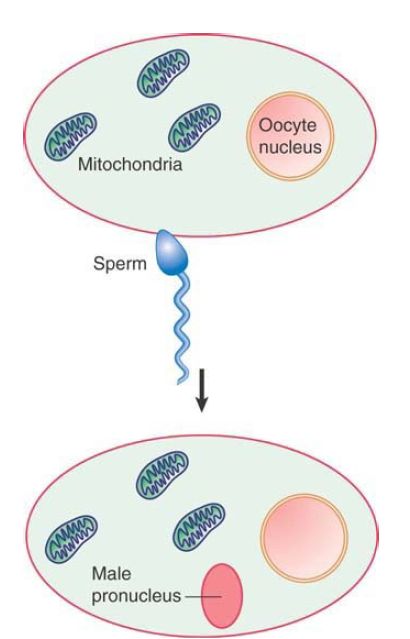

النبات

مواضيع عامة في علم النبات

الجذور - السيقان - الأوراق

النباتات الوعائية واللاوعائية

البذور (مغطاة البذور - عاريات البذور)

الطحالب

النباتات الطبية


الحيوان

مواضيع عامة في علم الحيوان

علم التشريح

التنوع الإحيائي

البايلوجيا الخلوية


الأحياء المجهرية

البكتيريا

الفطريات

الطفيليات

الفايروسات


علم الأمراض

الاورام

الامراض الوراثية

الامراض المناعية

الامراض المدارية

اضطرابات الدورة الدموية

مواضيع عامة في علم الامراض

الحشرات


التقانة الإحيائية

مواضيع عامة في التقانة الإحيائية


التقنية الحيوية المكروبية

التقنية الحيوية والميكروبات

الفعاليات الحيوية

وراثة الاحياء المجهرية

تصنيف الاحياء المجهرية

الاحياء المجهرية في الطبيعة

أيض الاجهاد

التقنية الحيوية والبيئة

التقنية الحيوية والطب

التقنية الحيوية والزراعة

التقنية الحيوية والصناعة

التقنية الحيوية والطاقة

البحار والطحالب الصغيرة

عزل البروتين

هندسة الجينات


التقنية الحياتية النانوية

مفاهيم التقنية الحيوية النانوية

التراكيب النانوية والمجاهر المستخدمة في رؤيتها

تصنيع وتخليق المواد النانوية

تطبيقات التقنية النانوية والحيوية النانوية

الرقائق والمتحسسات الحيوية

المصفوفات المجهرية وحاسوب الدنا

اللقاحات

البيئة والتلوث


علم الأجنة

اعضاء التكاثر وتشكل الاعراس

الاخصاب

التشطر

العصيبة وتشكل الجسيدات

تشكل اللواحق الجنينية

تكون المعيدة وظهور الطبقات الجنينية

مقدمة لعلم الاجنة


الأحياء الجزيئي

مواضيع عامة في الاحياء الجزيئي


علم وظائف الأعضاء


الغدد

مواضيع عامة في الغدد

الغدد الصم و هرموناتها

الجسم تحت السريري

الغدة النخامية

الغدة الكظرية

الغدة التناسلية

الغدة الدرقية والجار الدرقية

الغدة البنكرياسية

الغدة الصنوبرية

مواضيع عامة في علم وظائف الاعضاء

الخلية الحيوانية

الجهاز العصبي

أعضاء الحس

الجهاز العضلي

السوائل الجسمية

الجهاز الدوري والليمف

الجهاز التنفسي

الجهاز الهضمي

الجهاز البولي


المضادات الميكروبية

مواضيع عامة في المضادات الميكروبية

مضادات البكتيريا

مضادات الفطريات

مضادات الطفيليات

مضادات الفايروسات

علم الخلية

الوراثة

الأحياء العامة

المناعة

التحليلات المرضية

الكيمياء الحيوية

مواضيع متنوعة أخرى

الانزيمات
Some Eukaryotic Organelles Have DNA
المؤلف:
JOCELYN E. KREBS, ELLIOTT S. GOLDSTEIN and STEPHEN T. KILPATRICK
المصدر:
LEWIN’S GENES XII
الجزء والصفحة:
10-3-2021
2247
Some Eukaryotic Organelles Have DNA
KEY CONCEPTS
- Mitochondria and chloroplasts have genomes that show non-Mendelian inheritance. Typically they are maternally inherited.
- Organelle genomes can undergo somatic segregation in plants.
- Comparisons of human mitochondrial DNA suggest that it is descended from a single population that existed approximately 200,000 years ago in Africa.
The first evidence for the presence of genes outside the nucleus was provided by non-Mendelian inheritance in plants (observed in the early years of the 20th century, just after the rediscovery of Mendelian inheritance). Non-Mendelian inheritance is defined by the failure of the offspring of a mating to display Mendelian segregation for parental characters, therefore indicating the presence of genes that are outside the nucleus and are not distributed to gametes or to daughter cells by segregation on the meiotic or mitotic spindles.
FIGURE 1. shows that this happens when the mitochondria are inherited from both male and female parents and they have different alleles, so that a daughter cell can receive an unbalanced
distribution of mitochondria from only one parent . This is also true of chloroplasts in some plants; both mitochondria and chloroplasts contain genomes with functional genes.

FIGURE 1. When mitochondria are inherited from both parents and paternal and maternal mitochondrial alleles differ, a cell has two sets of mitochondrial DNAs. Mitosis usually generates daughter cells with both sets. Somatic variation can result if unequal segregation generates daughter cells with only one set.
The extreme form of non-Mendelian inheritance is uniparental inheritance, which occurs when the genotype of only one parent is inherited and that of the other parent is not passed on to the offspring. In less extreme examples, one parental genotype exceeds the other genotype in the offspring. In animals and most plants, it is the mother whose genotype is preferentially (or solely) inherited. This effect is sometimes described as maternal inheritance. The important point is that the organellar genotype contributed by the parent of one particular sex predominates, as seen in abnormal segregation ratios when a cross is made between mutant and wild type. This contrasts with the expected Mendelian pattern, which occurs when reciprocal crosses show the contributions of both parents to be equally inherited.
Leber’s hereditary optic neuropathy (LHON) is a human disease that shows maternal inheritance. It results from a point mutation in an NADH dehydrogenase subunit gene carried on mitochondrial DNA (mtDNA), a genome that is inherited only maternally, from mothers to both male and female offspring but not from fathers to any children. LHON is characterized by an abrupt loss of vision, usually in both eyes, in young adulthood.
In non-Mendelian inheritance, the bias in parental genotypes is established at, or soon after, the formation of a zygote. There are various possible causes. The contribution of maternal or paternal information to the organelles of the zygote might be unequal; in the most extreme case, only one parent contributes. In other cases, the contributions are equal, but the information provided by one parent does not persist. Combinations of both effects are possible.
Whatever the cause, the unequal representation of the information from the two parents contrasts with nuclear genetic information, which derives equally from each parent.
Some non-Mendelian inheritance results from the presence of DNA genomes that are inherited independently of nuclear genes, in mitochondria and chloroplasts. In effect, the organelle genome is aDNA molecule that has been physic ally sequestered in an isolated part of the cell and is subject to its own form of expression and regulation. An organelle genome can encode some or all of the tRNAs and rRNAs used within that organelle, but encodes only some of the polypeptides needed for normal functioning of the organelle. The other polypeptides are encoded in the nucleus,expressed via the cytoplas mic protein synthetic apparatus, and imported into the organelle.
Genes not residing within the nucleus are generally described as extranuclear genes; they are transcribed and translated in thesame organelle compart ment (mitochondrion or chloroplast) in
which they are carried. By contrast, nuclear genes are expressed by means of cytoplasmic protein synthesis. (The term cytoplasmic inheritance sometimes is used to describe the inheritance of genes in organelles. We will not use this term here because it is important to distinguish between processes in the general cytosol and those in specific organelles.)
Animals show maternal inheritance of mitochondria, which can be explained if the mitochondria are contributed entirely by the ovum and not at all by the sperm. FIGURE 2. shows that the sperm contributes only copies of the nuclear chromosomes. Thus the mitochondrial genes are inherited exclusively from the mother, and males do not pass these genes to their offspring. Chloroplasts are generally also maternally inherited, though some plant taxonomic groups (such as some Passiflora [passion flower] species) show paternal or biparental inheritance of chloroplasts.

FIGURE 2. In animals, DNA from the sperm enters the oocyte to form the male pronucleus in the fertilized egg, but all the mitochondria are provided by the oocyte.
The chemical environment of organelles is different from that of the nucleus; therefore, organelle DNA evolves at its own distinct rate. If inheritance is uniparental, there can be no recombination between parental genomes. In fact, recombination usually does not occur in those cases in which organelle genomes are inherited from both parents. Organelle DNA has a different replication system from that of the nucleus; as a result, the error rate during replication might be different. Mitochondrial DNA accumulates mutations more rapidlyth an nuclear DNA in mammals, but in plants the accumulation of mutations in the mitochondrial DNA is slower than in nuclear DNA; chloroplast DNA has an intermediate mutation rate.
One consequence of maternal inheritance is that the sequence variation in mitochondrial DNA is more sensitive than nuclear DNA to reductions in the size of the breeding population. Comparisons of mitochondrial DNA sequences in a range of human populations allow a phylogenetic “tree,” showing the branching lineages of mitochondrial DNA variants over time, to be constructed. The divergence among human mitochondrial DNAs spans 0.57%. A tree can be constructed in which the mitochondrial variants diverged from a common (African) ancestor. The rate at which mammalian mitochondrial DNA accumulates mutations is 2% to 4% per million years, which is more than 10 times faster than the rate for (nuclear) globin gene substitutions. Such a rate would generate the observed divergence over an evolutionary period of 140,000 to 280,000 years. Th is implies that human mitochondrial DNA is descended from a single population that lived in Africaapproxi mately 200,000 years ago. This cannot be interpreted as evidence that there was only a single population at that time, however; there might have been many populations, and some or all of them might have contributed to modern human nuclear genetic variation.
 الاكثر قراءة في مواضيع عامة في الاحياء الجزيئي
الاكثر قراءة في مواضيع عامة في الاحياء الجزيئي
 اخر الاخبار
اخر الاخبار
اخبار العتبة العباسية المقدسة

الآخبار الصحية















 قسم الشؤون الفكرية يصدر كتاباً يوثق تاريخ السدانة في العتبة العباسية المقدسة
قسم الشؤون الفكرية يصدر كتاباً يوثق تاريخ السدانة في العتبة العباسية المقدسة "المهمة".. إصدار قصصي يوثّق القصص الفائزة في مسابقة فتوى الدفاع المقدسة للقصة القصيرة
"المهمة".. إصدار قصصي يوثّق القصص الفائزة في مسابقة فتوى الدفاع المقدسة للقصة القصيرة (نوافذ).. إصدار أدبي يوثق القصص الفائزة في مسابقة الإمام العسكري (عليه السلام)
(نوافذ).. إصدار أدبي يوثق القصص الفائزة في مسابقة الإمام العسكري (عليه السلام)


















